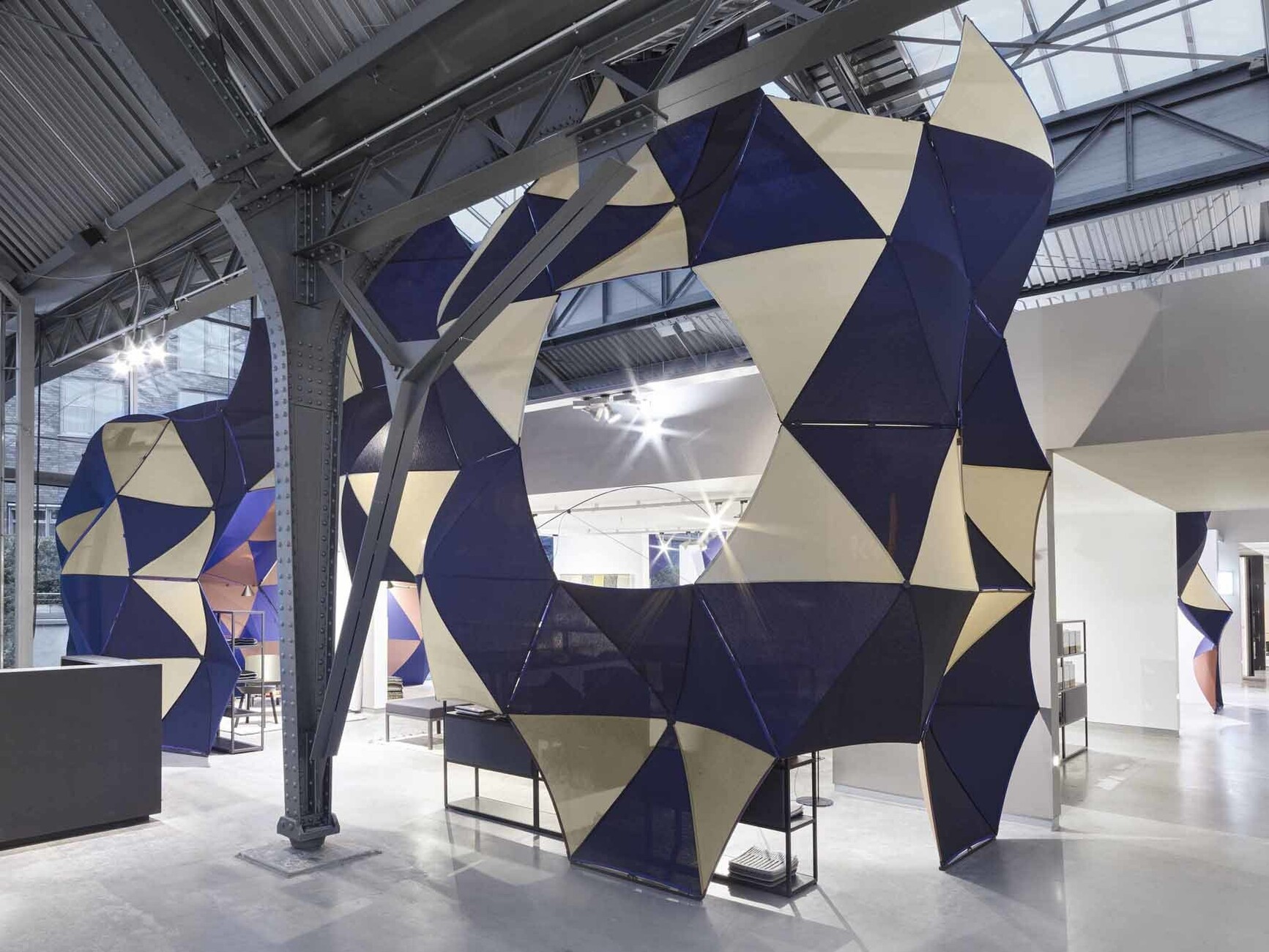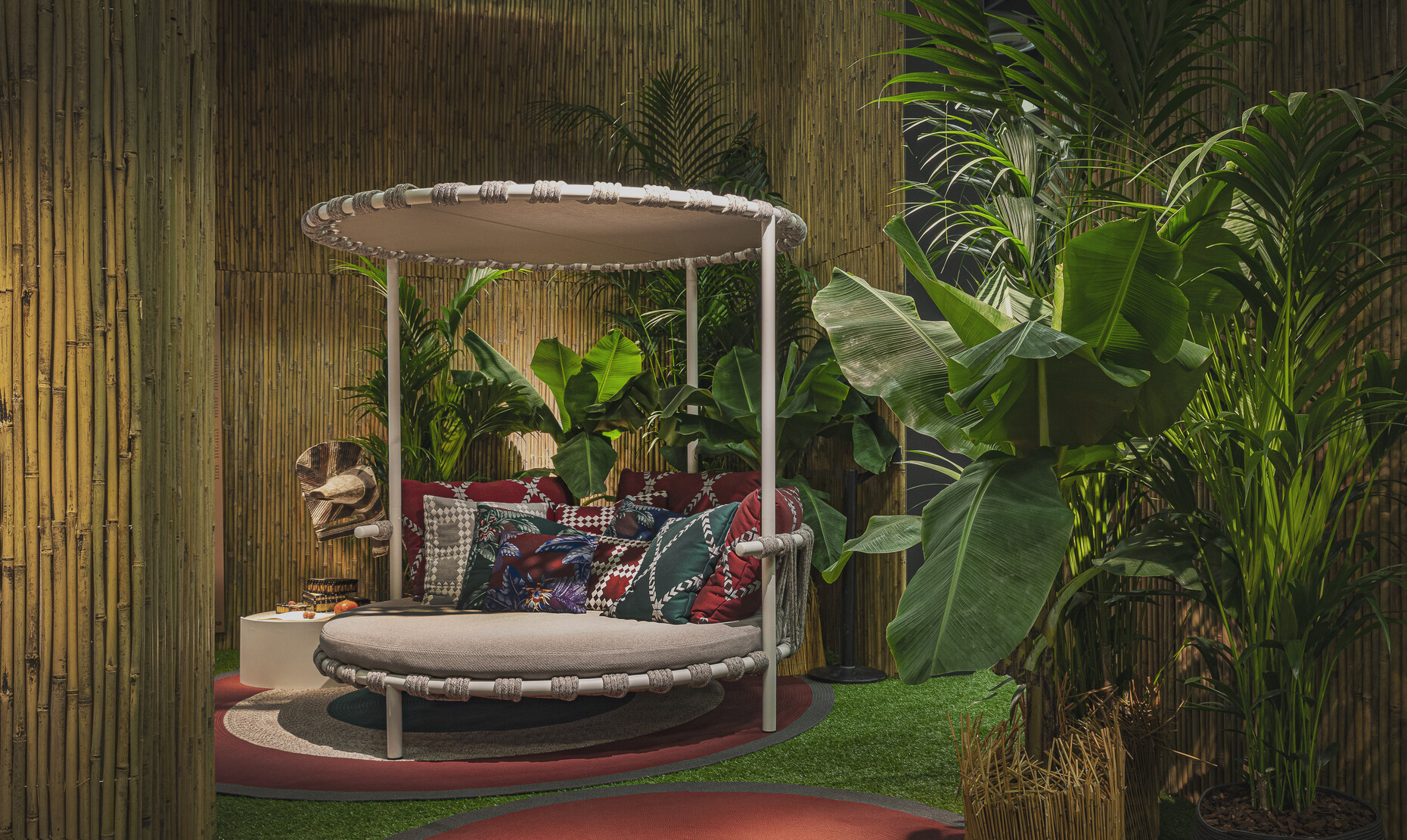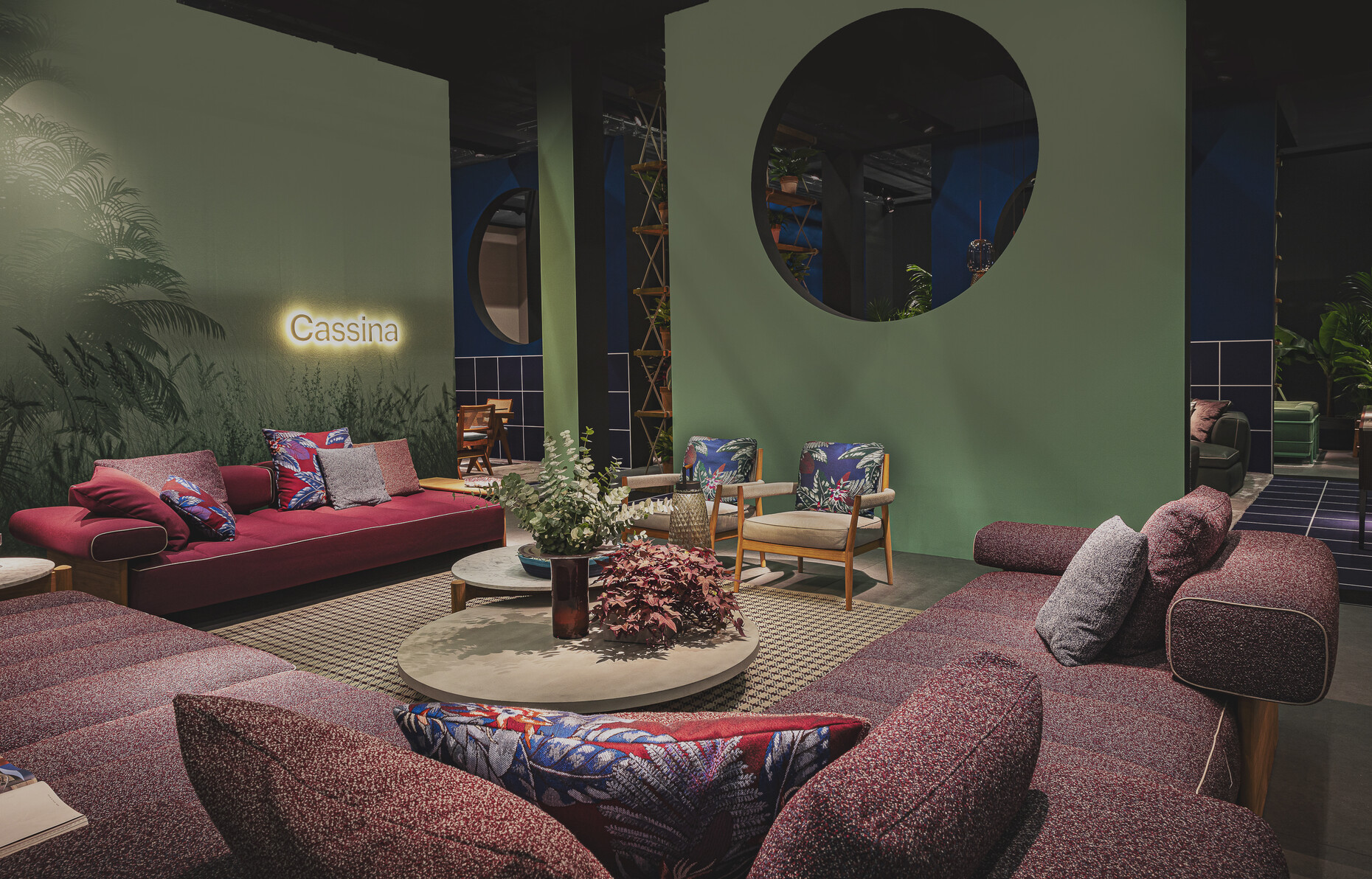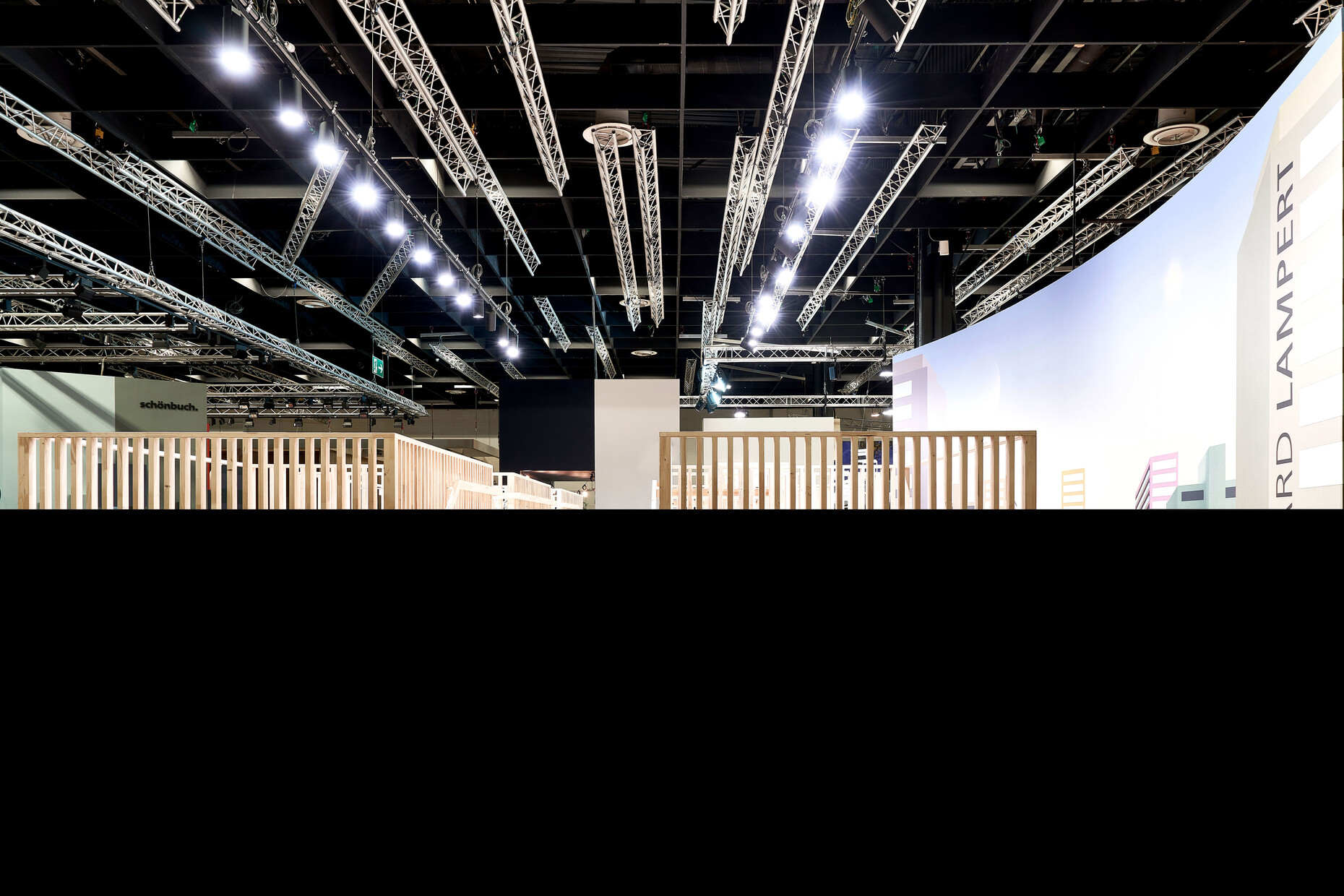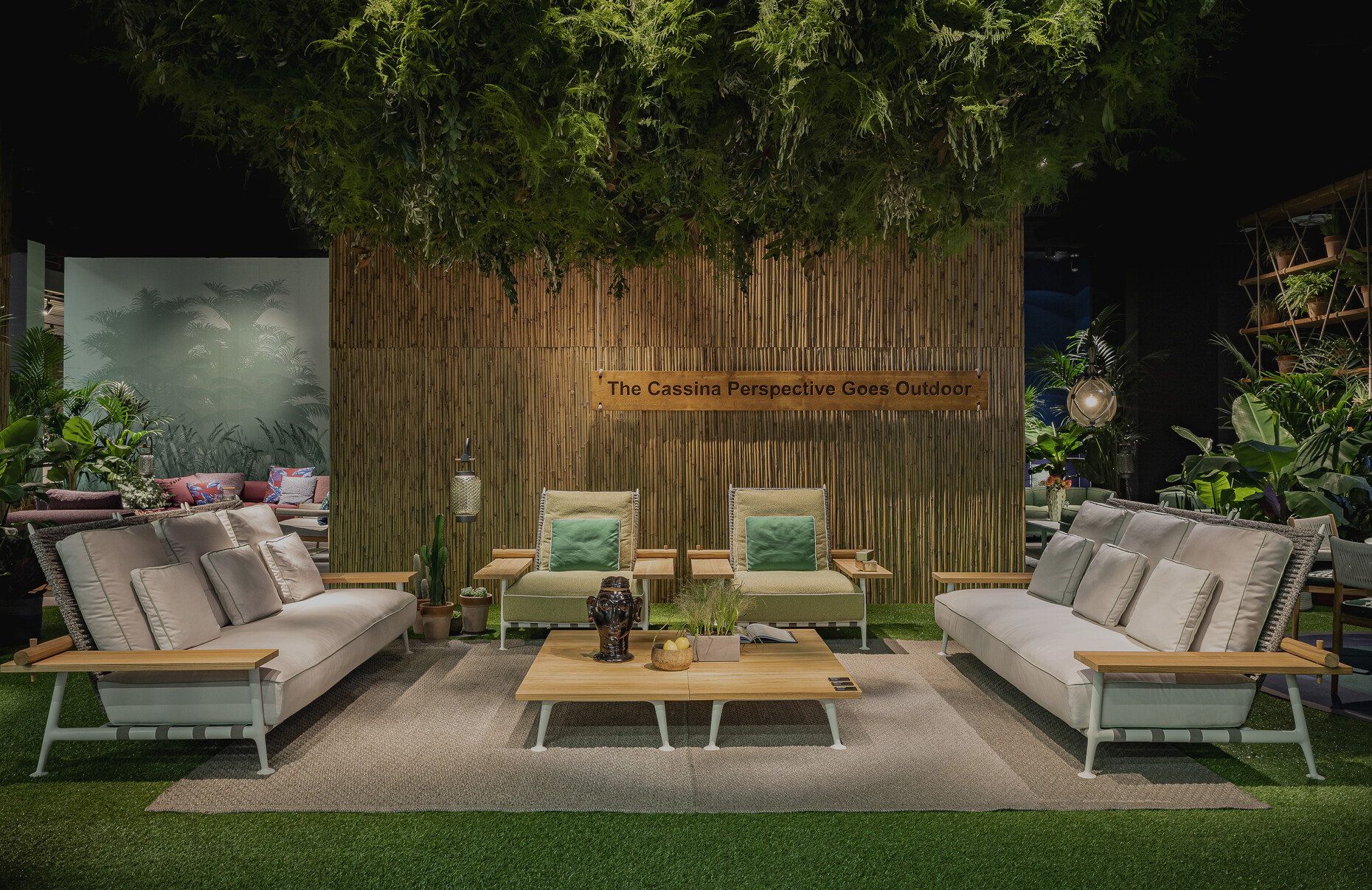IMM COLOGNE 2020
Documentation Center for Social Practices
Furnishings shape the contours of human existence – they define the spaces within which our everyday lives play out. Such a major furniture fair as imm cologne in Cologne acts as a way of measuring our changing lifestyles and illustrates our fantasies and ideals. Obviously, such things do not change abruptly or completely from one year to the next. We genuinely do need to take a close look in order to become aware of the kinds of real shift that go beyond new color trends.
Thus, the first thing that people might have noticed when looking around imm 2020 is that there were slightly fewer new things than there were in previous years. Is this the fair’s fault, after all there is fierce competition between imm, Maison et Objet, which takes place simultaneously in Paris, and the Salone del Mobile in Milan in April in terms of who is going to be the first to present any novelties. Or is this a first indication of a process of rethinking by the furniture industry whose orgies of novelties have, in recent years, repeatedly being the subject of criticism from within their own ranks, for instance from e15 founder Farah Ebrahimi? A large number of manufacturers came to Cologne with only one real novelty or even only a few items to complement existing ranges. Needless to say, the subject of sustainability was omnipresent, although, for outsiders, it is becoming increasingly difficult to distinguish between genuine commitment, trendsetting technology, and simply clever marketing. And genuine doubts could be expressed as to whether the manufacturers know the real situation themselves. But one way or the other – their goodwill is praiseworthy.
News about Chairs and Sofas
Those novelties that were presented were not fundamentally different from what had been on show at recent fairs. However, certain products do now appear to be making their presence felt, the kind of products that all the major manufacturers now want to have in their own collections and that are gradually making their way into said manufacturers’ product ranges. Armchairs for dining tables are a case in point. For a long time, such items have led a shadowy existence – admittedly they have been available from various different manufacturers of upholstered furniture, but they have always had very few takers. Until recently it has obviously been the unanimous opinion among designers and manufacturers alike that voluminous upholstery is detrimental to the design of a chair – after all, it makes the product both heavy and unwieldy and renders elegant lines an impossibility. Accordingly, to date, the dining armchair was usually condemned to eke out its existence in the showrooms of the furniture stores. However, it is suddenly becoming much more acceptable – even as far as those manufacturers specializing in high-end design are concerned. Last year, for example, COR as one of the leading German seating furniture manufacturers in the premium segment presented “Nenou” – a range explicitly developed around a comfortable table armchair, as designer Jörg Boner reports. Now, in 2020, with their “520” model Thonet is also launching an upholstered chair for the dining table. Designer Marco Dessí has succeeded in the difficult balancing act of combining iconic bentwood shapes with an upholstered backrest. No easy task. “Even if it does sound like a design cliché,” remembers Dessí, “I experienced a kind of epiphany during the design process – I looked at my classic Thonet 209 bentwood armchair and asked myself whether the backrest bar could not be pushed downwards and a cushioned element placed above it.” As both Dessí and Thonet’s creative director Norbert Ruf agree, the rest of the design process consisted mainly of “peeling away” in order to lend the chair a certain lightness despite its bulky upholstery.
Why is it that even design-loving purchasers have recently started to prefer dining armchairs over the classical dining chair? The most plausible explanation appears to be that nowadays domestic life increasingly revolves around the dining table. The omnipresent open kitchen in our living spaces often leads to hosts and guests staying at the table for a long time. And of course, anybody sitting in one place for hours on end will understandably want to be sitting as comfortably as possible. The sofa suite, for a long time the social heart of any apartment, has now, as Werner Aisslinger explained last year (link), had its day as the center of formal living. Instead, the sofa has mainly become a private place of retreat for the family and is now used for both working and relaxing on. The relevant designs have now become correspondingly informal. In contrast to the dining armchair, the informal sofa system now reigns supreme, so to speak, in every price category on the furniture market. This year, premium German manufacturers Rolf Benz and Walter Knoll are both presenting one new model aimed at a younger, quality and design-conscious market. “Liv” (link) by Rolf Benz (design: Luca Nichetto) and “Muud” by Walter Knoll (design: EOOS) attempt to combine lightness with versatility. In “Muud”, large quilted feather cushions aim to convey comfortableness and informality. Moreover, thanks to a flap-out mechanism a corner sofa configuration can be transformed into a spare double bed.
Despite this kind of technically intricate additional functions, the large manufacturers do prefer to leave the subject of “living in a small space”, something that truly is of great relevance, in view of the way that property prices keep soaring in our cities, either to specialists such as Müller Small Living or even to IKEA. Indeed, one could almost believe that many companies have reached the conclusion that living spaces must be getting smaller because gardens are getting larger. An increasing number of space-filling garden furniture items destined for patios the size of an average person’s home is flooding the market. And now Cassina has joined the fray, offering the garden lovers amongst the oligarchs and technology millionaires outdoor furniture by Rodolfo Dordoni, something known as a “love bed” with the dimensions of a small hall, by Patricia Urquiola and a furniture suite with a table dreamt up by Philippe Starck. The latter presented his design, a menacing-looking affair made of wood, steel and knitted textile, surrounded by hordes of fans, many of whom appeared to come from regions all over the world, regions where the target audience for “Fenc-e Nature” are to be found. Starck claims to have created a “sentimental product”, as he “always does”, and, having shouted this to his audience, simply disappeared from view.
Engineers and Aesthetes
This kind of popularity is something that even the most successful of German designers could only dream about. This year, Germany’s “in” designers are, once again, Stefan Diez and Sebastian Herkner, who represent opposite ends of the spectrum in German design. Diez, who is technically minded and loves tinkering about, not only designed the exhibition booth for Kvadrat, the main element of which is a folding screen reminiscent of Frei Otto. Diez also developed the luminaire “Ayno” for Midgard, together with his employee Lina Fischer – possibly the fair’s best new product. “Ayno” consists of a base, a lampshade and between the two a highly flexible fiberglass rod which can be bent into almost any position and fixed with the power cable. The fact that it has so few elements allows Midgard to market the luminaire, which was manufactured entirely in Germany, at an extremely competitive price.
Sebastian Herkner, for his part, demonstrates a continuing love of arts and crafts. In the form of ClassiCon he has succeeded in increasing the dimensions of his classic “Bell Table” side table to create a beautiful dining table. The challenge here was to find a glassblower capable of producing its characteristic glass base in the requisite size. Now, a full eight years after the premiere of its “little brother”, the right manufacturer has at long last been found. Like Diez, this year Herkner has also acted as a booth designer and came up with one of the fair’s most successful designs for Thonet. He structured the presentation space using folding screens made of the cane that is so typical of the brand and had canopies attached to the outside of the stand. These were intended as references to the brand’s legendary coffeehouse chair, the Thonet “214”. Herkner scored another success in a design for ligne roset. His “Taru” sofa is somehow reminiscent of avant-garde design, for instance in its powerful feet. Such details call to mind the bulky, almost cloddish lines that are characteristic of Faye Toogood’s “Roly Poly Chair”.
However, despite all respect for Herkner’s impressive design it has to be said that the surprising, venturesome and disturbed quality that makes Toogood’s chair so special is missing from “Taru”. Anybody in search of sensational design outside the mainstream at imm 2020 was only able to find this kind of thing in two locations: In one of the trade fair’s unadorned corridors AHEC, the American Hardwood Export Council was showing the “Legacy” project produced for the 2019 London Design Week. And even if its presentation in Cologne turned out to be much less glamorous than when it premiered at the Victoria & Albert Museum the ten exhibits designed by Jasper Morrison and Max Lamb were unquestionably the best designs to be seen this year. It is truly inspiring how much quality all these designs possessed, despite everything that was different about them. One of the objects, a standing desk for Iwona Blazwick, the director of London’s Whitechapel Gallery, was the brainchild of Raw Edges the designer duo who received the Designer of the Year award at Architektur & Wohnen on the Sunday before the fair started. The little exhibition of the work on show during imm cologne at Hotel 25hours illustrates just what was somehow lacking at the furniture fair and from the exhibiting companies – the courage to try out things that are truly new! After all, anybody who only understands changing social practices after the event risks being left behind at some point.




